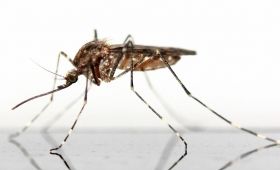
Diagnosis of Zika infection is complex. Molecular tests for exposure are only reliable in the first two to three weeks after infection while the virus is circulating in the bloodstream. Antibody tests are confounded by cross-reactivity of antibodies to Zika with dengue, yellow fever, and Japanese encephalitis viruses following infection or vaccination. A new blood test called ZIKV-NS2B-concat ELISA is faster, less expensive, and extends the window of accurate detection from weeks to months after the onset of infection, giving clinicians a powerful new tool to screen for Zika throughout pregnancy.
>> Read the Full Article

 ENN
Environmental News Network -- Know Your Environment
ENN
Environmental News Network -- Know Your Environment